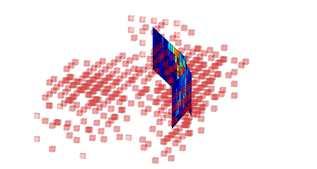| − | </b><br>Espen B. Raknes, Aker BP, espen.birger.raknes@akerbp.com June 13, 2018 Seismic interpretation is dependent on the experience of the interpreter and the quality of the seismic data. Therefore, interpretations include uncertainties, in particular in areas with complex geology. Today, interpretation is a task that is performed mainly by manual work resulting in a tedious work flow, often consisting of repeated tasks. With the increase in computational power over the recent decade, methods involving artificial intelligence (AI)/machine learning (ML) have been introduced with success in different disciplines for automating methods and processes. Seismic interpretation is a relatively new area for ML methods. Therefore, theory and methodology must be developed as well as tested on real world data applications. This is not a straightforward task as seismic data typically are very large data volumes, representing physical measurements significantly influenced by noise and the convolution of many different types of signals. Moreover, using human interpretations in supervised machine learning is challenging due to human errors, individual differences when interpreting, and a difficulty finding large enough training sets with few or no false negatives due to under-interpretation. We present a proof-of-concept study which purpose was to develop a machine learning work flow using human-made interpretations from fields in both exploration and production phases. The goal of this work was to create a supervised deep learning method using convolutional and fully convolutional neural networks that could automatically classify faults and horizons from 2D and 3D seismic data samples. Most of the work was performed in designing the neural networks as well as an efficient work flow starting with the interpretations that was used as input in the training of neural networks, to a result that the interpreter could use in daily work. The results show that our image recognition method is able to detect and classify faults and horizons accurately. However, when training using data from a single field, the model shows limited ability to generalize to other fields. Using real-time image augmentation when training helps reduce the over-fitting. In the continuation of this work, we propose using much larger datasets drawn from fields with different characteristics combined with data augmentation. | + | </b><br>Espen B. Raknes, Aker BP, espen.birger.raknes@akerbp.com June 13, 2018 Seismic interpretation is dependent on the experience of the interpreter and the quality of the seismic data. Therefore, interpretations include uncertainties, in particular in areas with complex geology. Today, interpretation is a task that is performed mainly by manual work resulting in a tedious work flow, often consisting of repeated tasks. With the increase in computational power over the recent decade, methods involving artificial intelligence (AI)/machine learning (ML) have been introduced with success in different disciplines for automating methods and processes. Seismic interpretation is a relatively new area for ML methods. Therefore, theory and methodology must be developed as well as tested on real world data applications. This is not a straightforward task as seismic data typically are very large data volumes, representing physical measurements significantly influenced by noise and the convolution of many different types of signals. Moreover, using human interpretations in supervised machine learning is challenging due to human errors, individual differences when interpreting, and a difficulty finding large enough training sets with few or no false negatives due to under-interpretation. We present a proof-of-concept study which purpose was to develop a machine learning work flow using human-made interpretations from fields in both exploration and production phases. The goal of this work was to create a supervised deep learning method using convolutional and fully convolutional neural networks that could automatically classify faults and horizons from 2D and 3D seismic data samples. Most of the work was performed in designing the neural networks as well as an efficient work flow starting with the interpretations that was used as input in the training of neural networks, to a result that the interpreter could use in daily work. The results show that our image recognition method is able to detect and classify faults and horizons accurately. However, when training using data from a single field, the model shows limited ability to generalize to other fields. Using real-time image augmentation when training helps reduce the over-fitting. In the continuation of this work, we propose using much larger datasets drawn from fields with different characteristics combined with [[Data Quality#Data Augmentation, Data Labeling, and Auto-Tagging|data augmentation]] |
